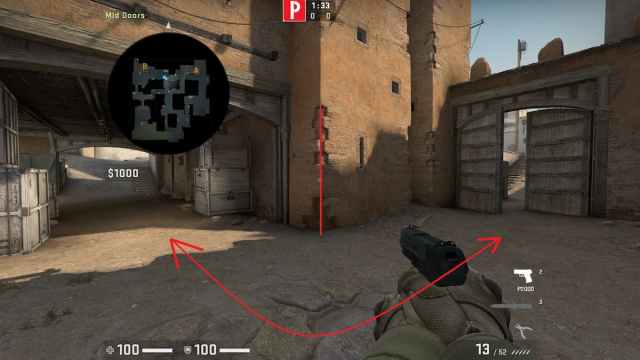While some players think and feel that this is a one-million-dollar question, it’s actually not that quite of a difficult subject. Finding the best mouse sensitivity in CS2 differs from person to person because, in the end, everyone has different opinions, styles of play, and hardware. I’ll help you discover your best mouse sensitivity in CS2, and hopefully, it will help improve your game. Also, we’ll talk about the DPI (Dots Per Inch) of your mouse, as it’s an important factor as well.
What DPI is the Best and Which DPI Should I Use in CS2?
DPI is the built-in sensitivity in your mouse, in layman’s terms. The bigger it is, the “faster” your mouse pointer moves when you move it. It’s a bad trade-off to choose a higher DPI as it can result in losing accuracy and precision. Most professional CS2 players prefer using 400 DPI, and then they fine-tune their sensitivity in-game. However, it’s not a big deal if you choose to use a higher DPI, as what matters the most is choosing what works best for you and your playstyle.
For better accuracy, turn off mouse acceleration in all settings and increase sensitivity in-game.
What is the Best Mouse Sensitivity in CS2?
The premise is fairly simple. Boot up any map in CS2 (I used de_dust2, but really, anything works) and find an object, decal, or corner that’s distinguishable. I chose the corner of a wall on Dust 2 CT Spawn because it gives me a 270-degree zone for maneuvering.
It’s important to stress the significance of having a large mousepad. Mousepads that are smaller than half the size of your keyboard are likely to fall short. In fact, many players recommend getting a mousepad that is large enough for you to complete a full 360-degree turn without having to lift the mouse.

The idea of this “training” is to keep your mouse (crosshair) fixated on a specific point (in this case, it’s the edge of the wall) and to move around it using the strafe keys from various distances and keep the crosshair on the same spot, wherever you are located.
This serves as training to hold your aim at a certain corner during the round as well. Be mindful that Counter-Strike was never an arena shooter game where you constantly need to use fast flicks, but it’s more of a tactical shooter where you are supposed to hold angles. It’s no surprise that many CS pros have very small mouse sensitivity values.
To check your current sensitivity type sensitivity in the console, and a value will show. I advise you to increase or decrease it by small increments (0.2 or 0.1). If you are having trouble catching up with your character’s movement, increase it a bit. If you are “overshooting” the target, decrease it. Later, you can go to different aim maps to test out how the changed sensitivity feels.
Be aware that you may experience some placebo effects, and at first, you may struggle with muscle memory that remembers the old sensitivity. As with any major change, it will take some time to adapt. We recommend practicing extensively in Deathmatch before moving on to a competitive setting to ensure you are comfortable with the changes. Remember, training takes time, and success does not happen overnight.
If you are new to CS:GO, make sure to check how to refund purchases in CS2.





Published: Sep 25, 2023 11:24 am